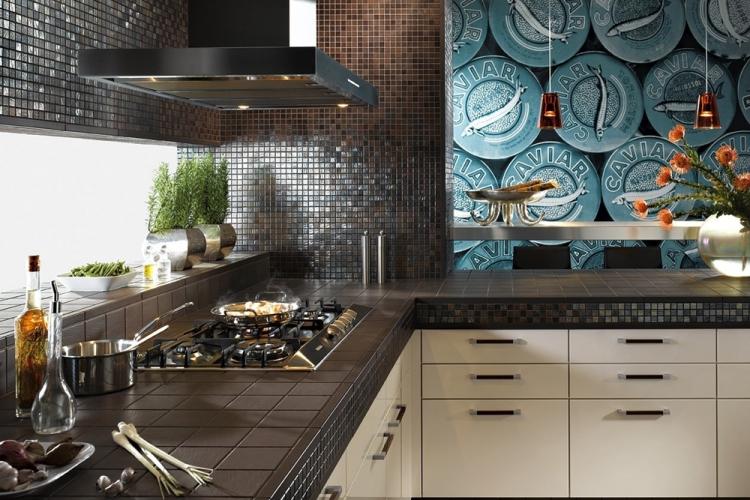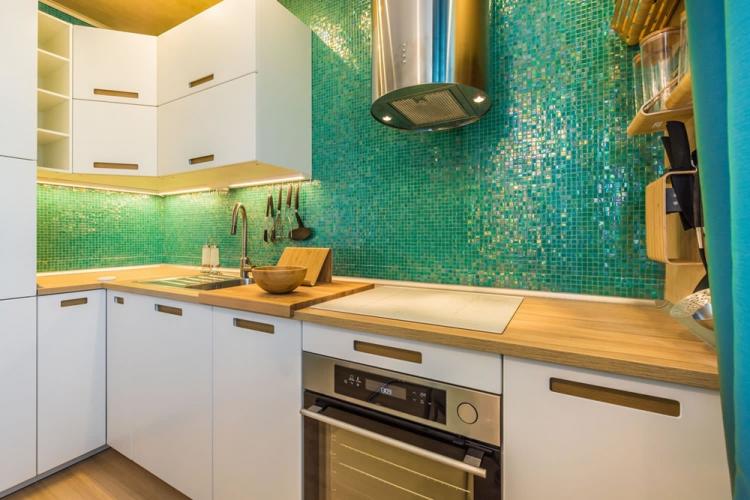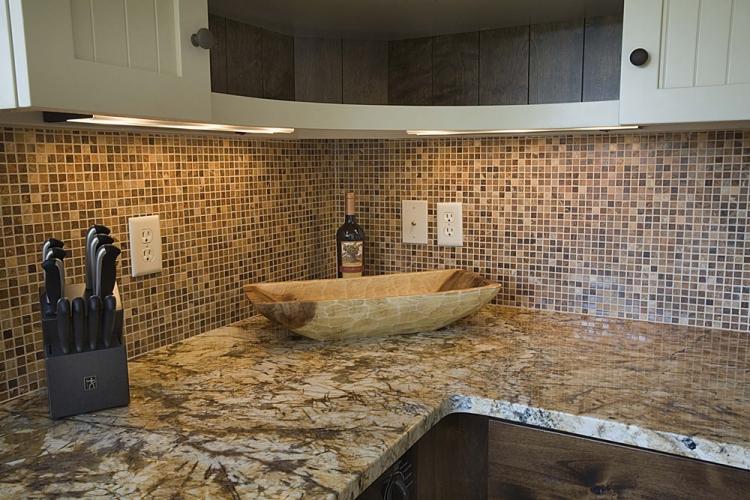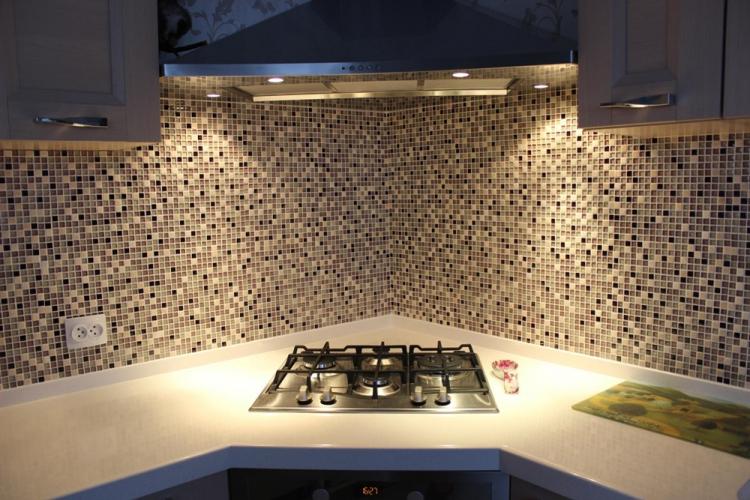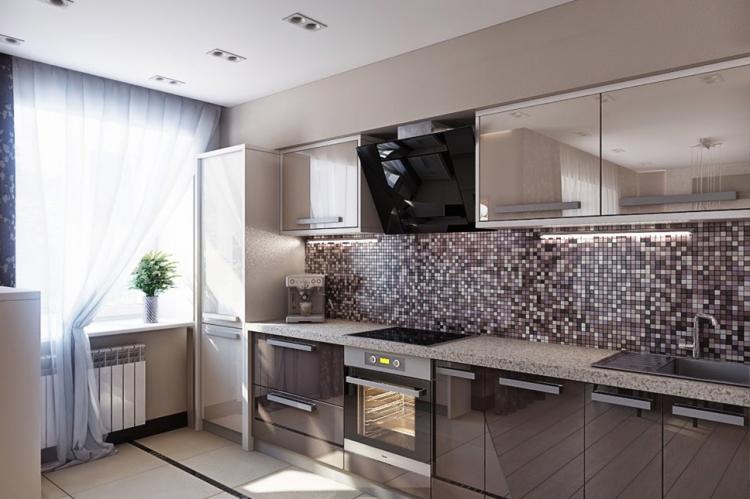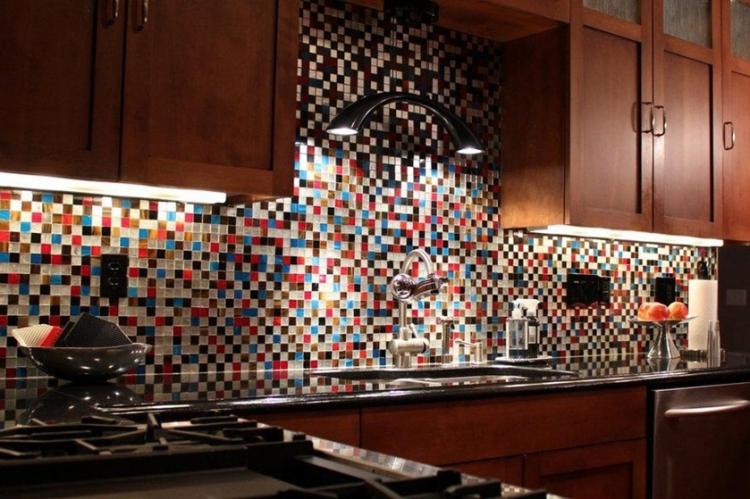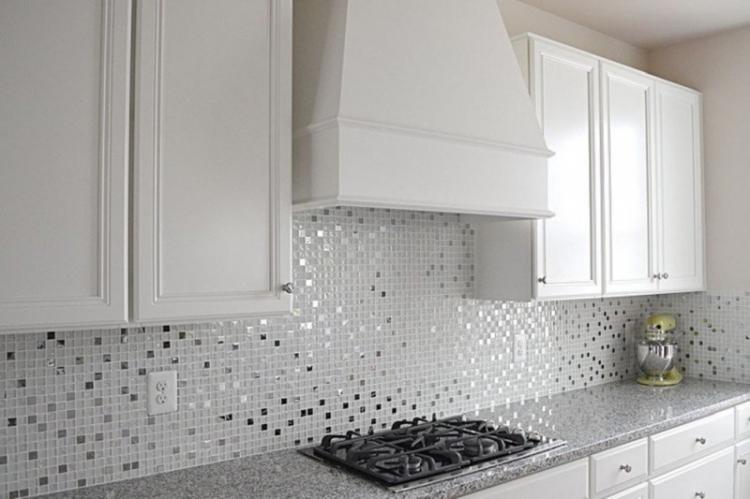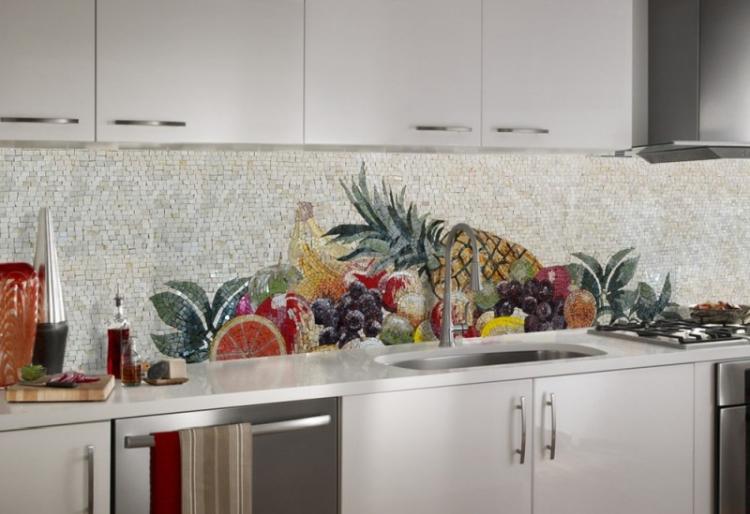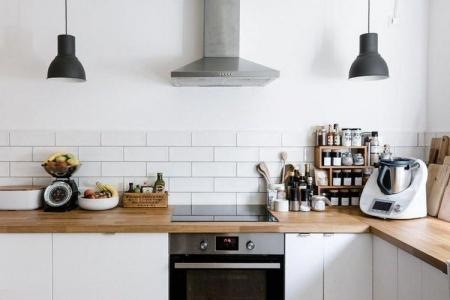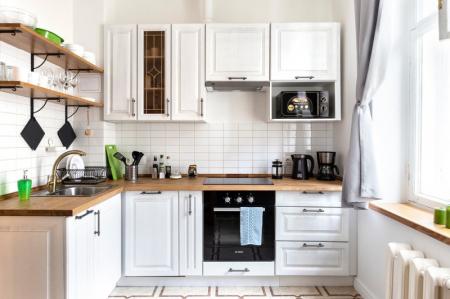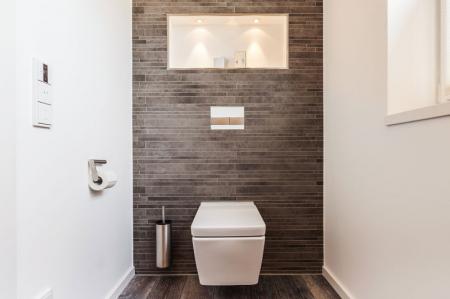
Water and grease from the stove constantly splashes onto the wall above the kitchen work surface, leaving stains. Because of this, the wallpaper quickly deteriorates, and even the paint has to be updated frequently. Is this a familiar problem? She has a very simple and affordable solution: a special apron that is easy to clean and at the same time stylishly complements the interior. Moreover, there are much more options for its design than you might think at first glance. Now we will tell you about them!
1. Apron in the kitchen of ceramic tiles
Ceramic tiles are the simplest and most versatile solution that is most often used in modern kitchens. It is practical, durable and affordable, resistant to moisture, temperature, acids and alkalis. The tiles are easy to clean with both special and conventional dishwashing detergents.
The collections differ in designs, textures, shapes and sizes, and thanks to different styling methods, even from the same series, you can create fundamentally different finishes. The tile is combined with any materials and countertops, and at the same time harmoniously fits into all interiors, from classics to futurism.
The biggest drawback and weak point of a ceramic tile backsplash are the seams. The grout is more difficult to wash, it needs to be treated to remove the fungus and periodically renewed. The second problem arises at the stage of laying tiles: a perfectly flat base is needed for it, and the process itself is rather dirty.
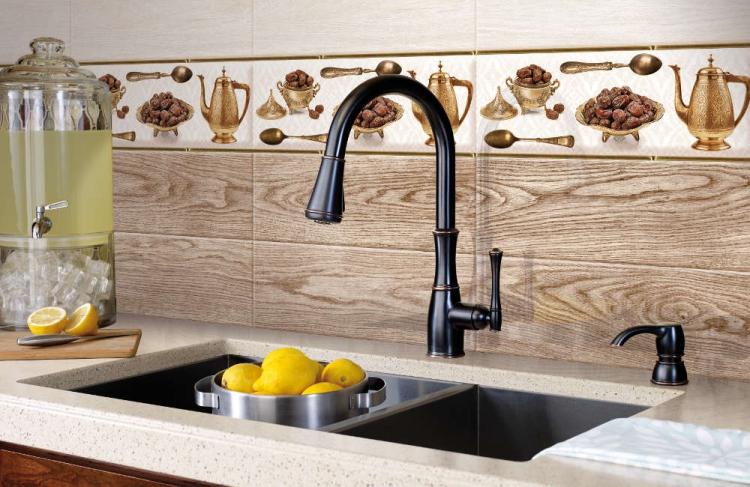
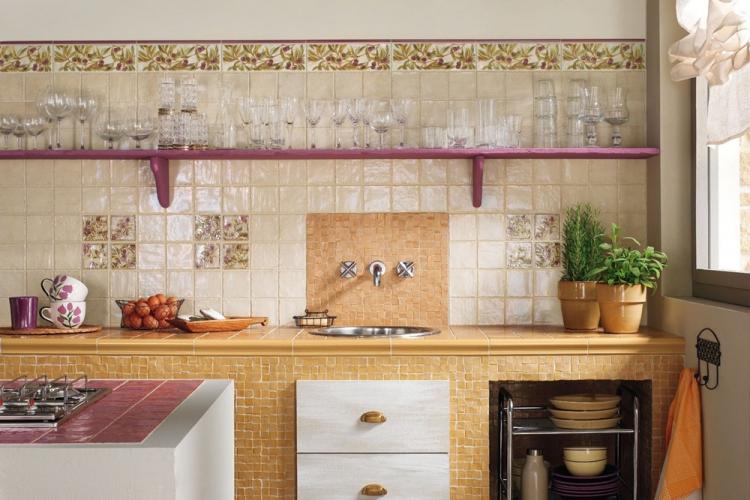
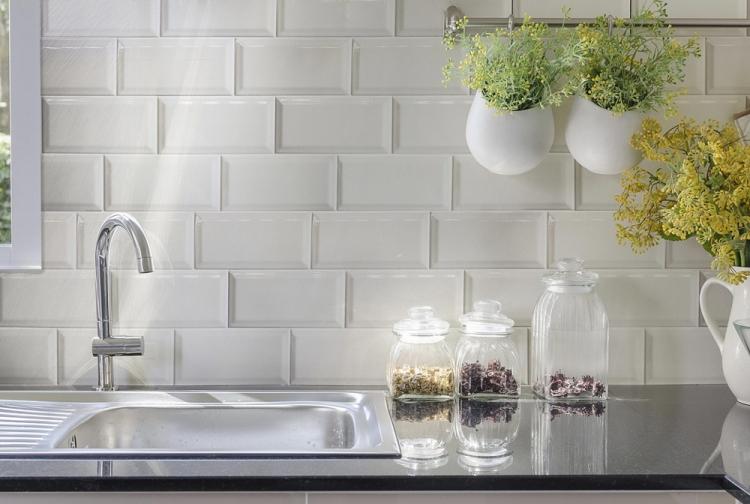

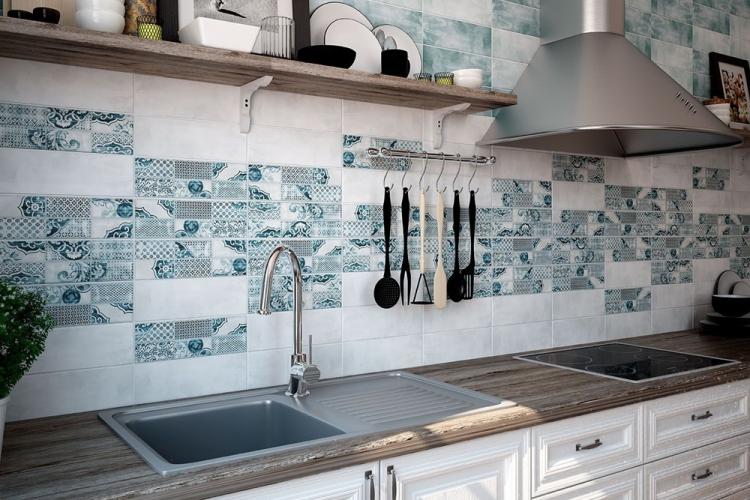
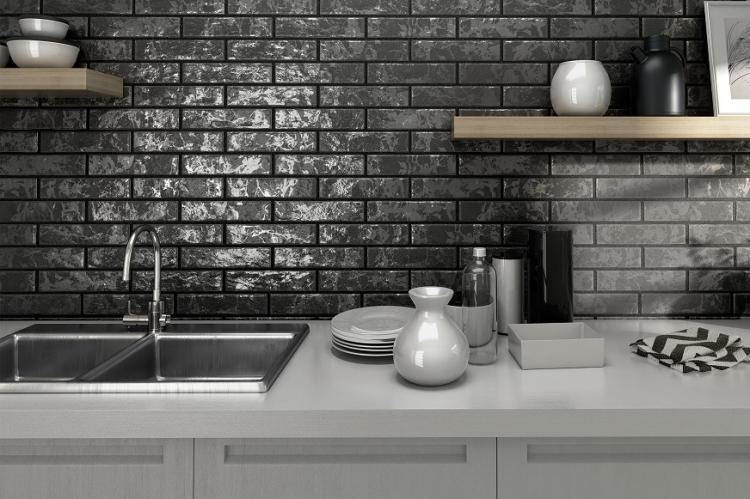
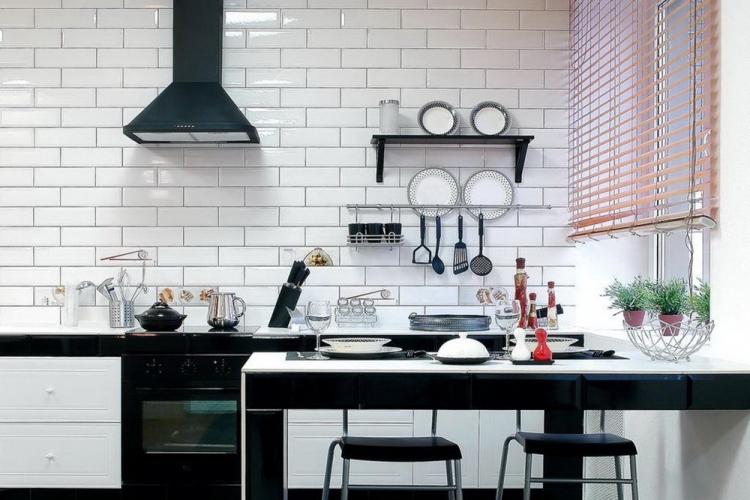
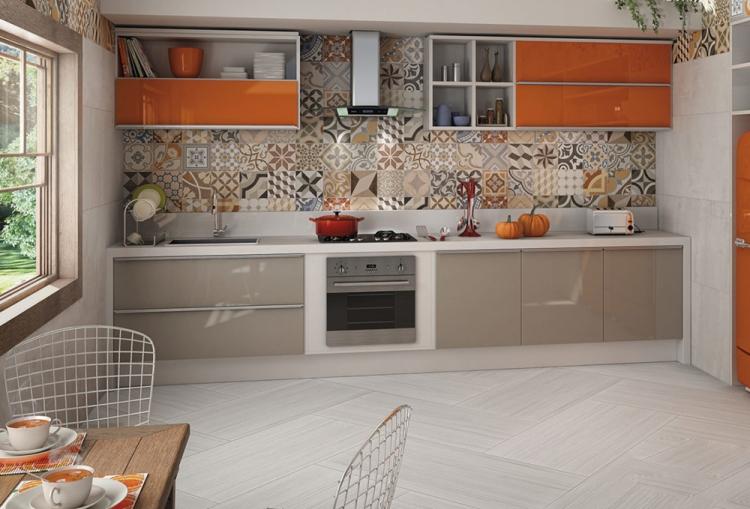
2. Apron in the kitchen made of natural stone
Natural stone is a stylish and luxurious solution for expensive classic interiors. For finishing, thin slabs with a thickness of 1.5-2 cm are used. Basically, these are granite or marble: they are durable, beautiful, not afraid of fire and temperature extremes.
The perfectly smooth surface of granite is practically without pores, therefore it does not absorb odors, dirt and grease. In addition to the variety of shades, slabs are always different from each other, and no two identical minerals exist in nature.
Granite is not only dark, but also gray-pink, blue, brown, yellow and even almost white. Shades of marble are also different, and it can be even cheaper, depending on the deposit.
There are two main disadvantages: the high price of natural stone and its large weight, which overload the base and complicate installation. Such an apron will require delicate handling and careful maintenance, and especially marble with a higher moisture absorption.
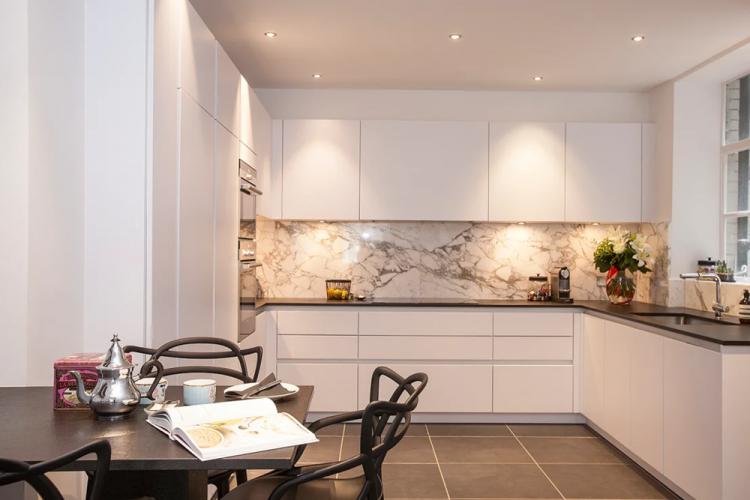
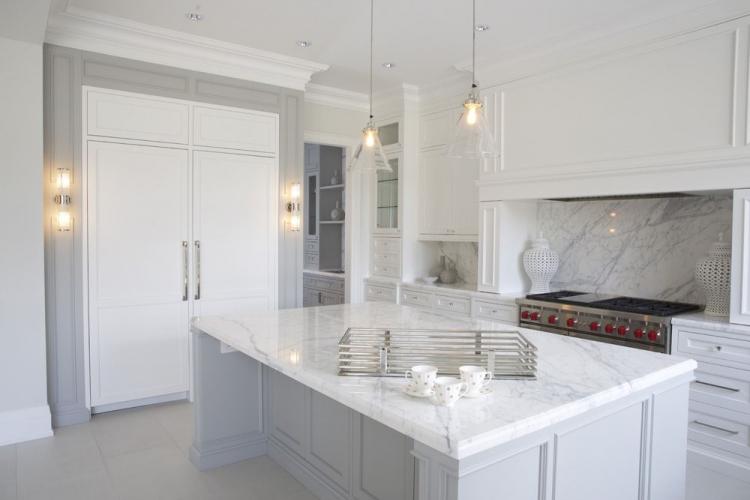
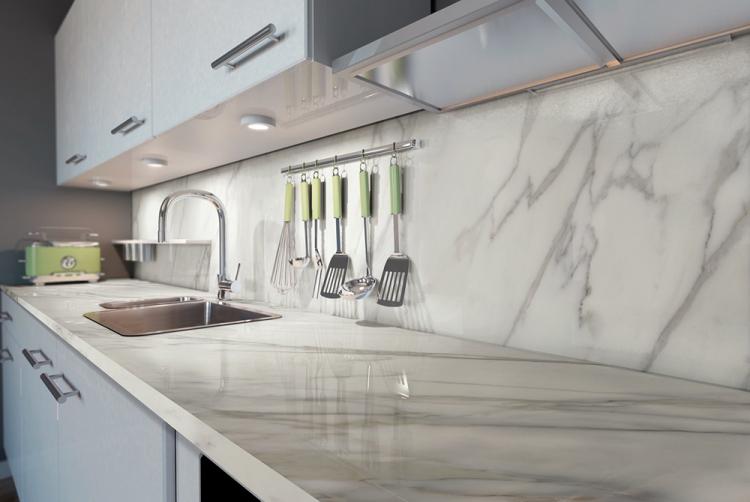
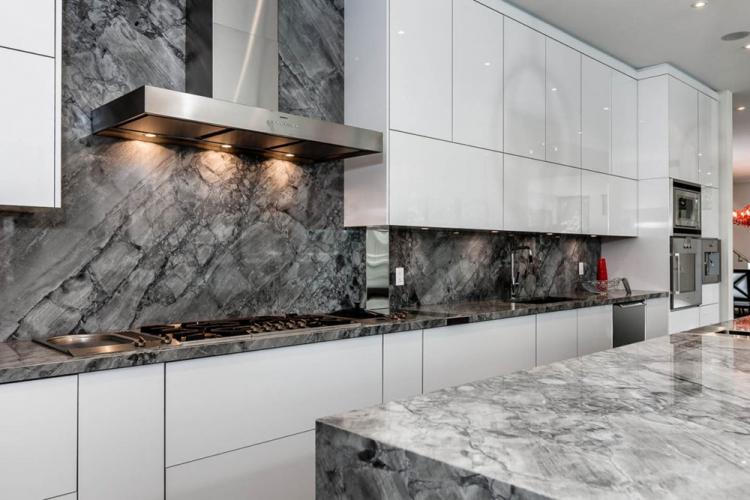
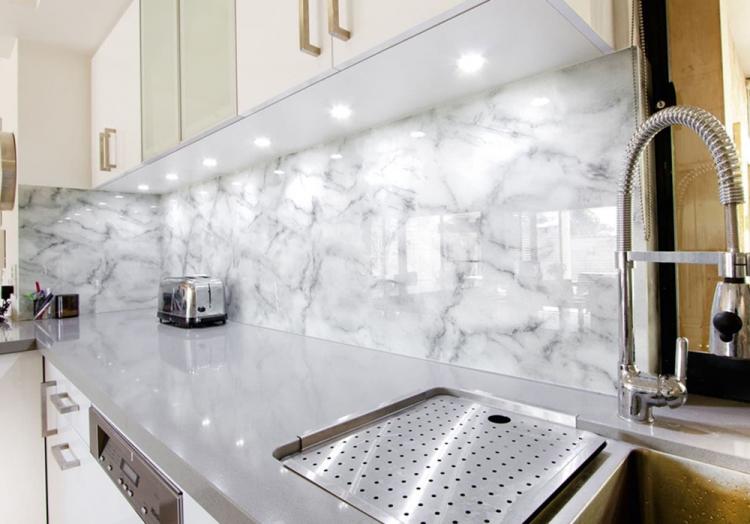

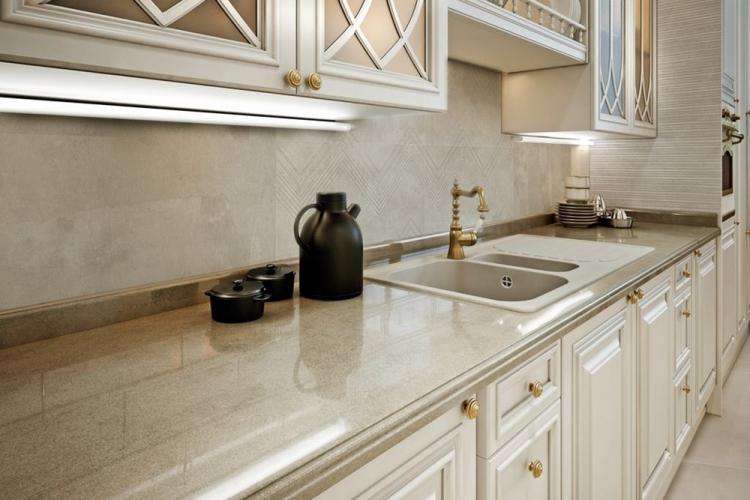
3. Apron in the kitchen made of artificial stone
If natural stone is too expensive and too heavy, there are now much more practical alternatives that are easier to work with. Artificial stone easily imitates absolutely any breed, but it will cost less, although it is still more expensive than tiles, glass and porcelain stoneware.
Artificial stone is produced in plates and slabs of different sizes, regardless of the size of the rock. Thus, you can make a seamless apron, which means that you can immediately avoid the weakest point. In addition, it is repairable and can be refurbished so that even damaged finishes can be easily repaired.

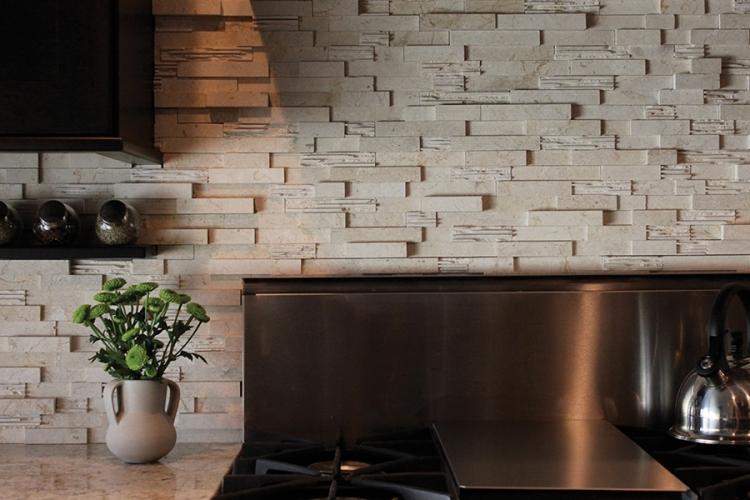
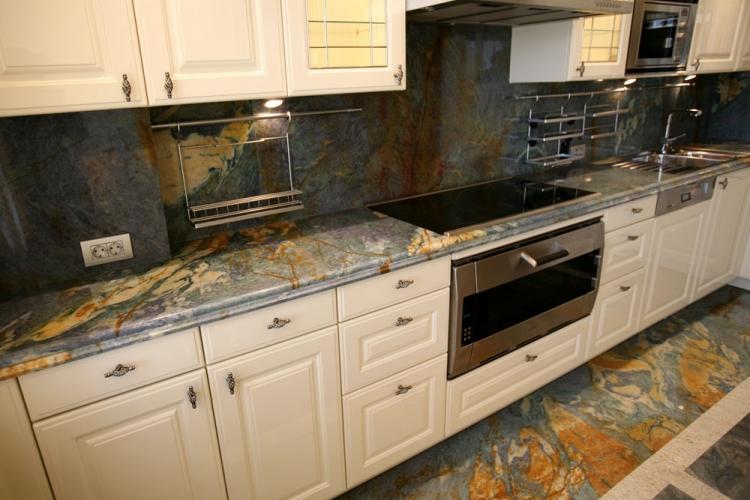
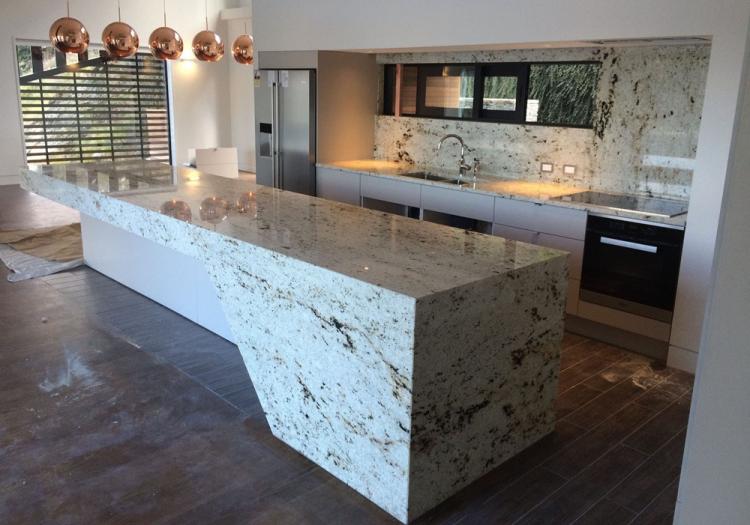
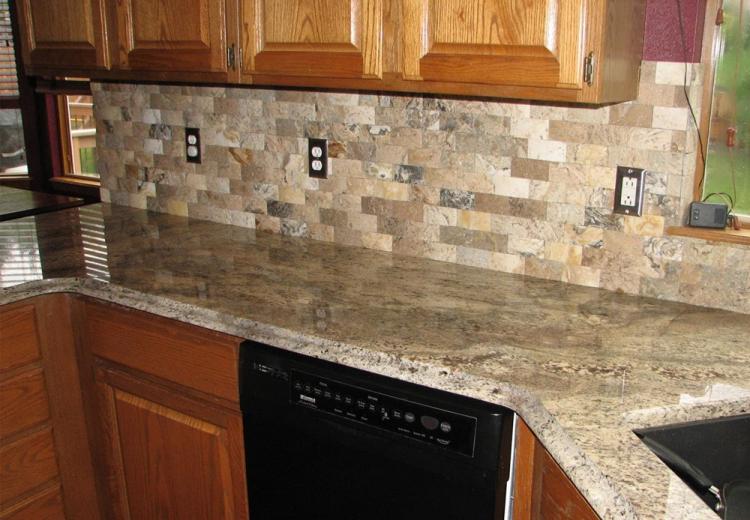

4. Apron in the kitchen made of glass
Glass is not the most common, and therefore it is always an original and creative solution. Tempered glass is used for finishing the aprons, which is resistant to mechanical damage. Even if you manage to accidentally break it, it will shatter into non-sharp, smooth fragments.
A glass apron is one of the most unpretentious to care for, because it is not afraid of either detergents or even harsh abrasives. It is almost impossible to scratch or stain it irreversibly. And you can install a glass plate directly on top of more elegant and delicate finishes: wallpaper, wood, or even a collage of photographs, postcards, notes and posters.
A glass apron is always individual, because it is made strictly to order and for specific sizes. But this is also its disadvantage: the purchase and professional installation will cost more than tiles. The apron is installed using special dowels with elegant decorative plugs.
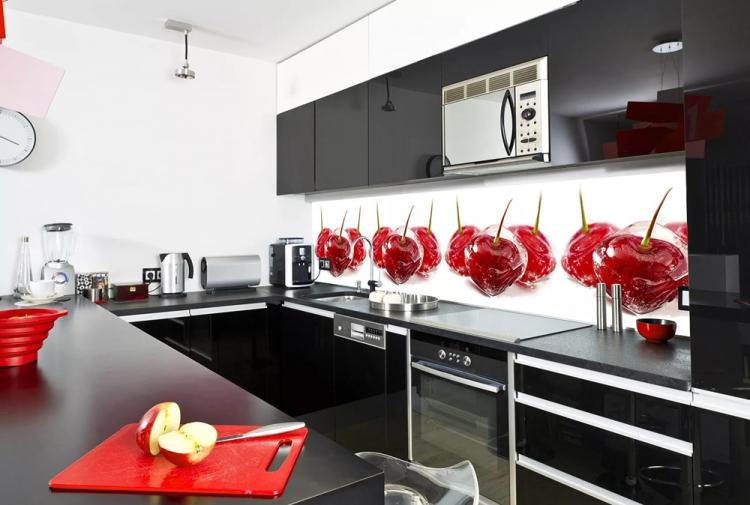
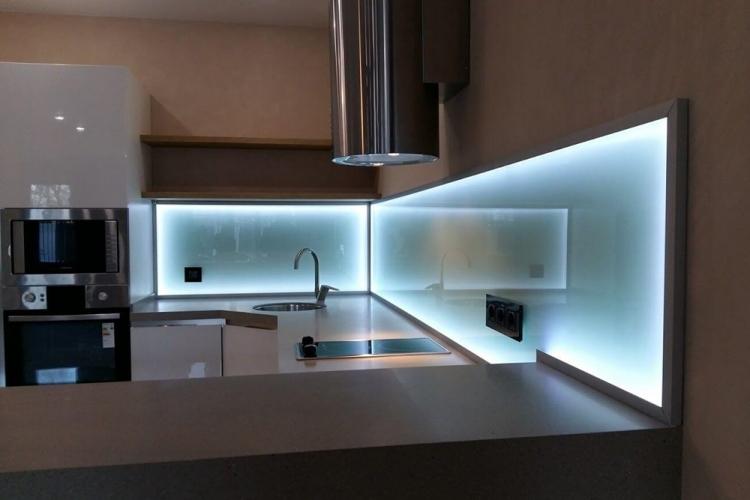
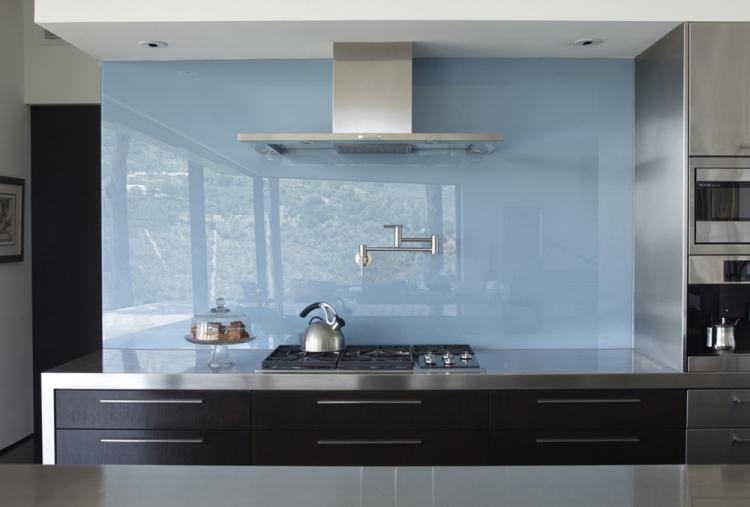
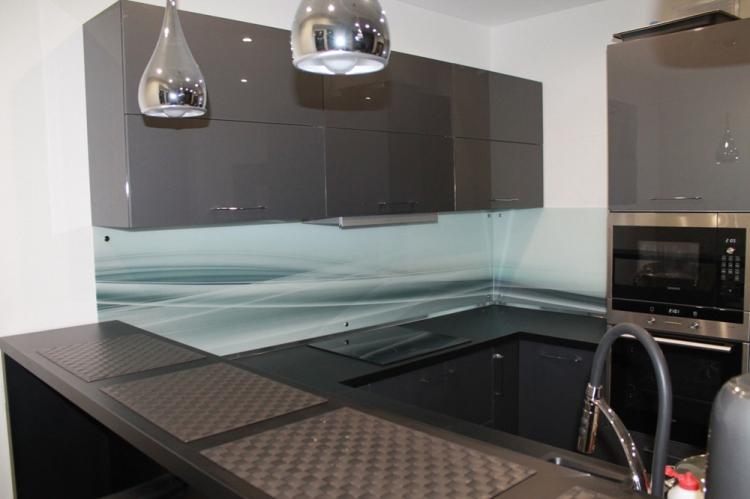

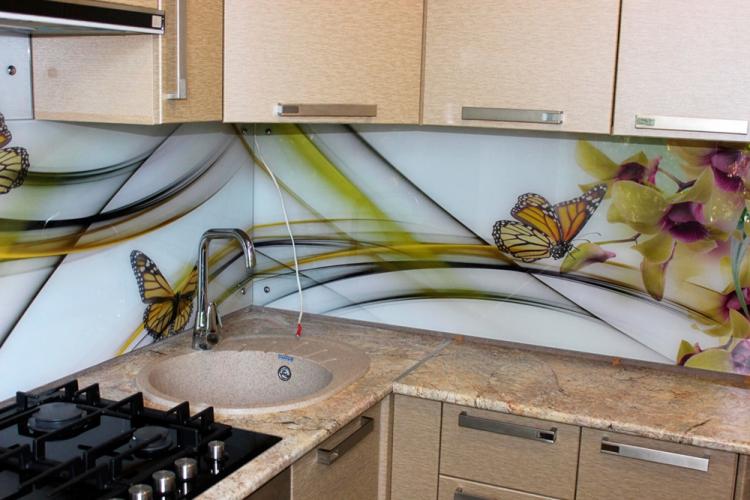
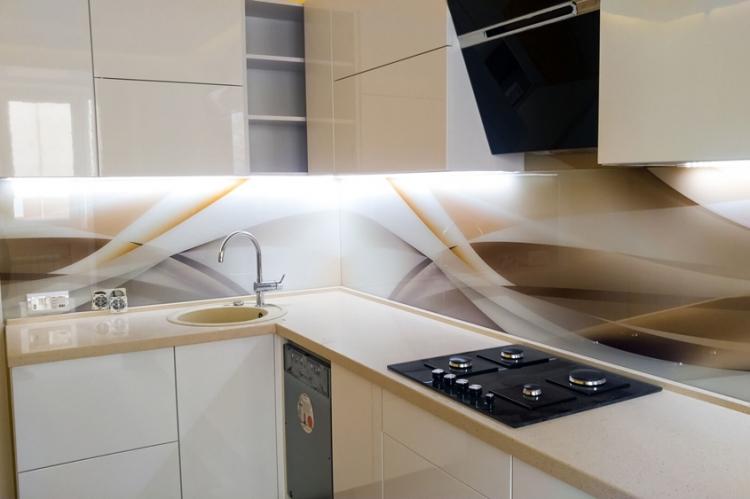
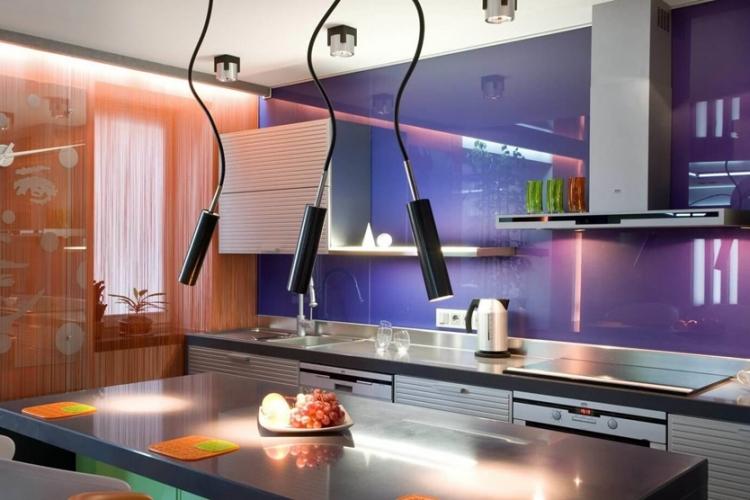
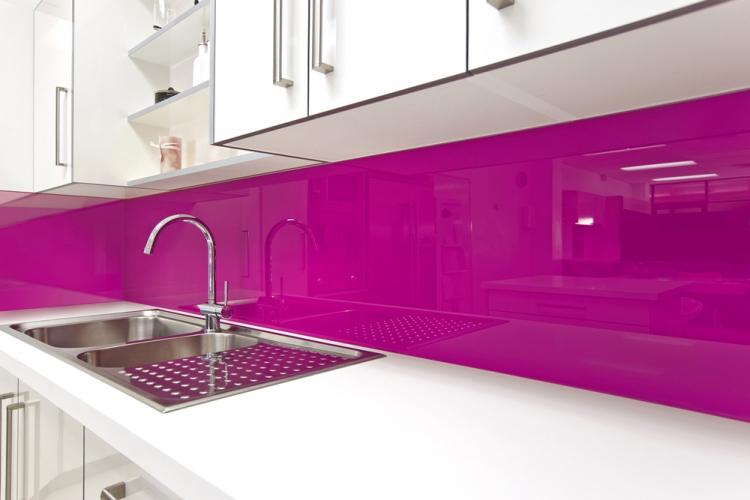
5. Acrylic apron in the kitchen
Acrylic is a stylish and modern alternative to glass, which is actively used in modern minimalist and technological interiors. At its core, this is plexiglass, which is painted or even decorated with photo printing or patterns.
During production, a special polymer is poured between ordinary glass layers, which is colored after curing. Such an apron is mounted without seams, is unpretentious in maintenance and goes well with acrylic facades. But keep in mind that it will fit mostly only in modern kitchens.
During installation, the sheet is simply glued onto a pre-leveled wall or installed over the lathing. The plywood sheathing hides communications and irregularities, and the acrylic board is fixed with self-tapping screws or on liquid nails. Damaged acrylic can be wiped and polished, and the surface is washed with ordinary soapy water.
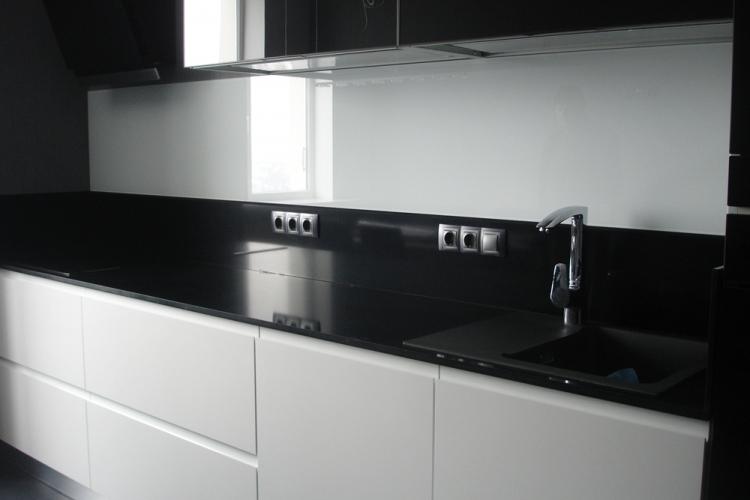
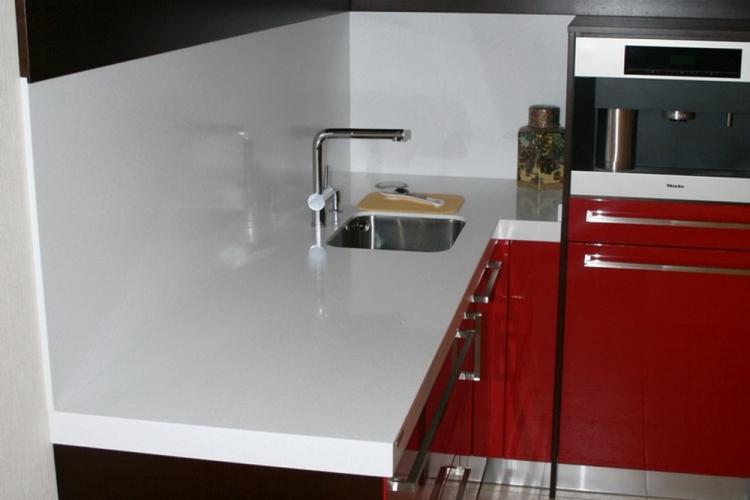


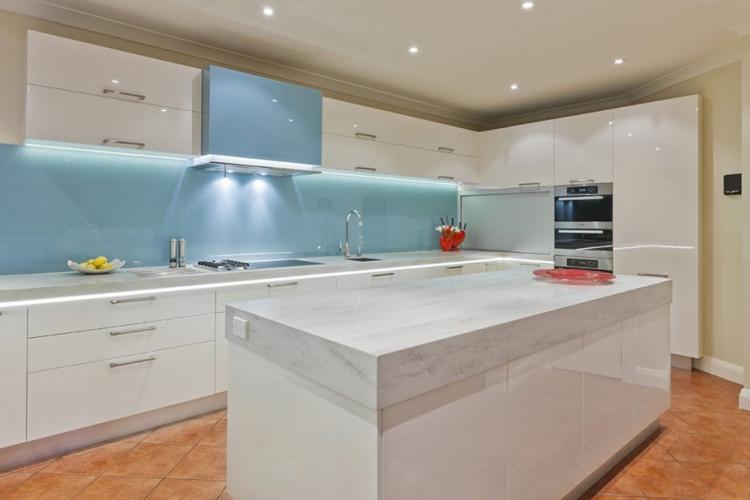

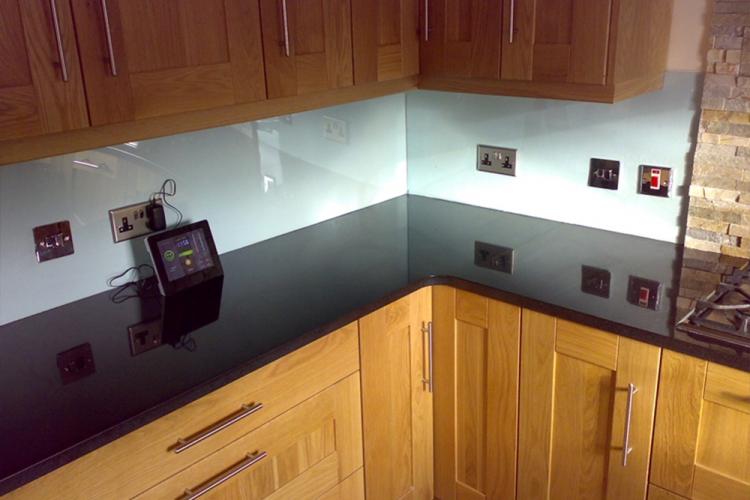
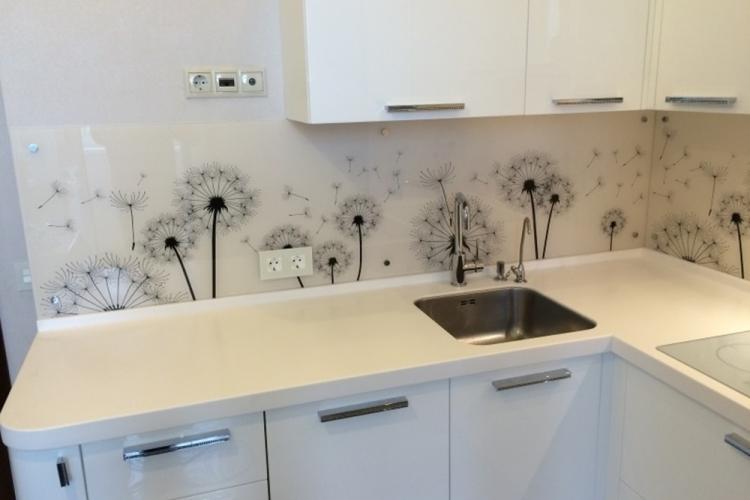
6. Apron in the kitchen made of wood
Natural wood panels are rarely used for a backsplash, because even the most durable wood will be expensive and will not last long in such conditions. But plates made of chipboard or MDF with a laminated coating can cope with kitchen loads.
Such an apron can be made completely under the countertop, so that the composition looks holistic and harmonious. The thickness of the slabs is from 0.5 to 1.5 mm, so they still do not take up valuable space, and they can even be laid on an imperfect base.
Please note that chipboard and MDF cannot be used in the area above the stove, especially above the gas: this is unsafe. The second problem is the sensitivity of the woodgrain finish to aggressive detergents, so you have to be careful with cleaning. The standard problem of seams remains here, but they are traditionally covered with corners and moldings.

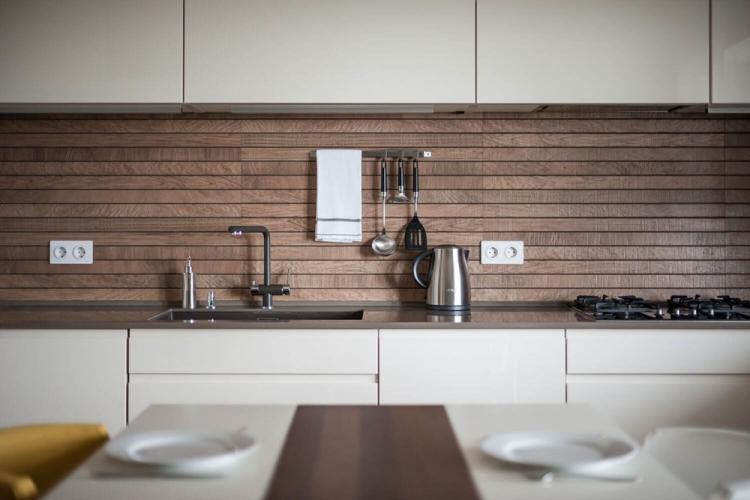
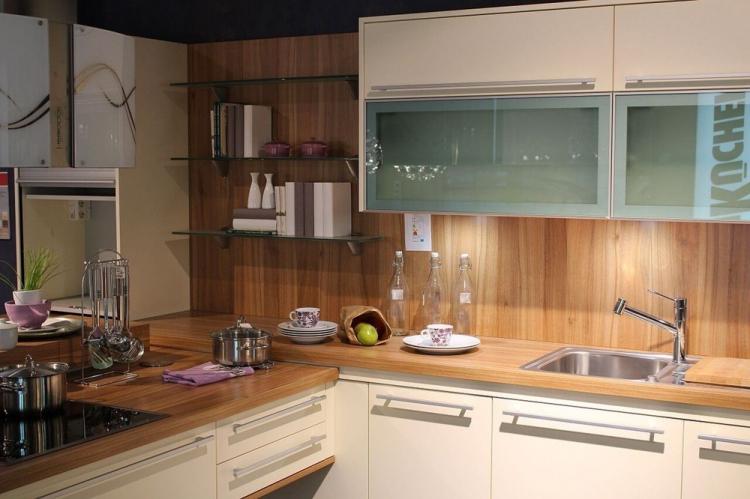
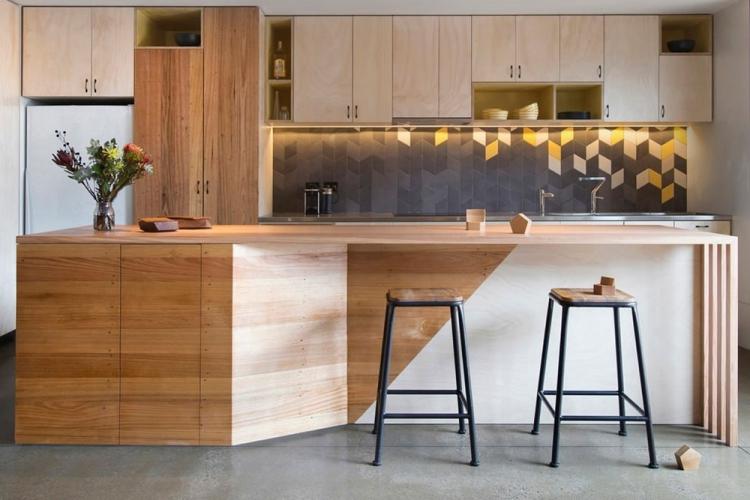
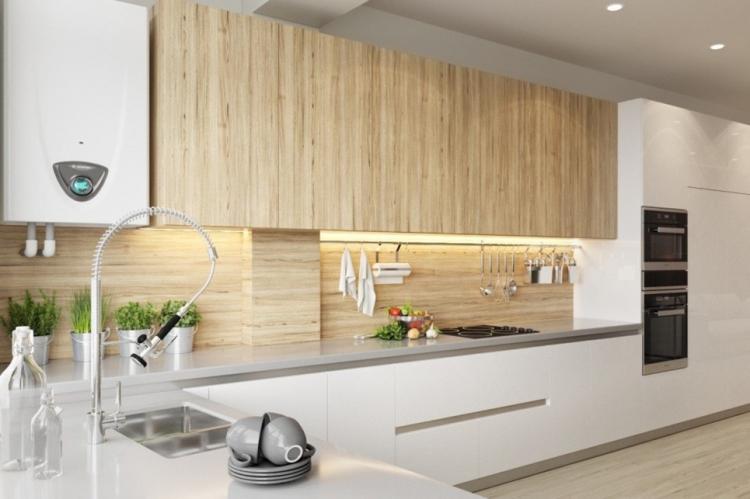
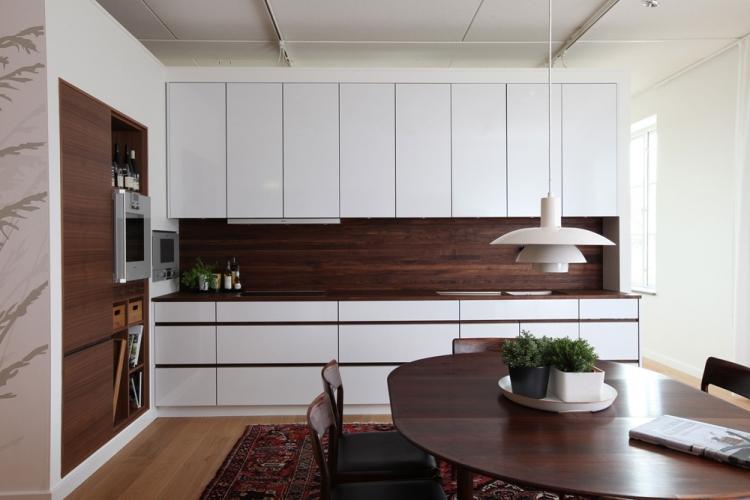
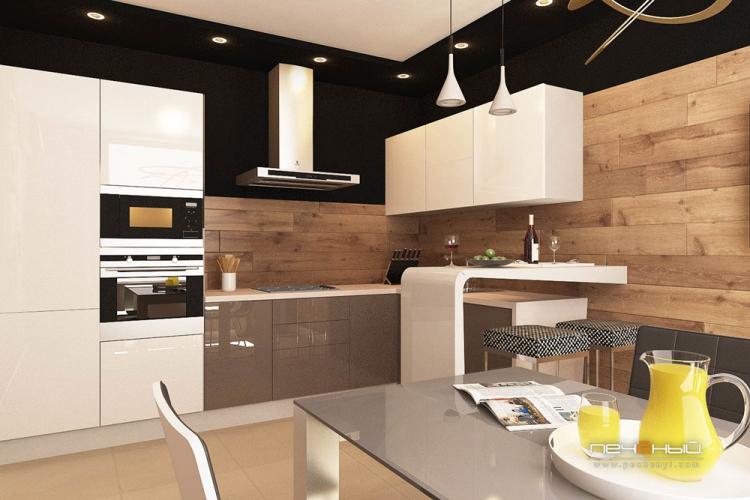
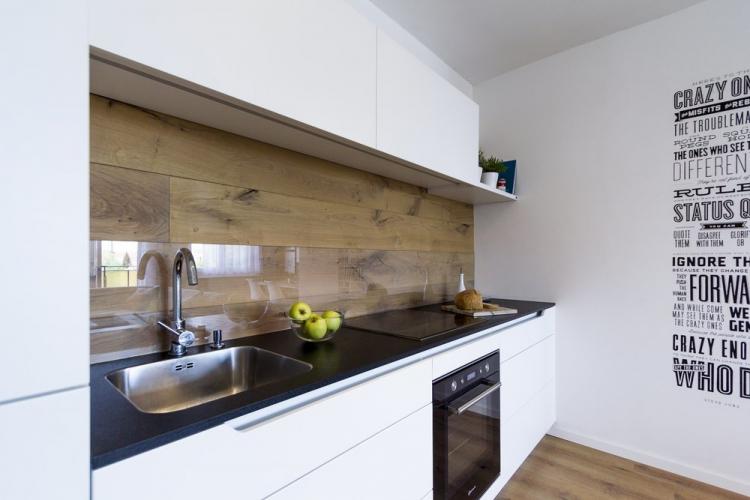
7. An apron in a brick kitchen
Rough brickwork is back in fashion along with industrial styles. Such an apron looks bright and interesting in a loft, Scandinavian interior, grunge, boho and even some types of classics and country.
If you prefer bright accents, leave the classic terracotta shade. For a strict and elegant contemporary, paint the surface in black or gray, and for light and delicate interiors - in white or pastel colors. But the brickwork is embossed and rather difficult to maintain, therefore, it is better to close it with a glass panel in the area of the slab and sink.
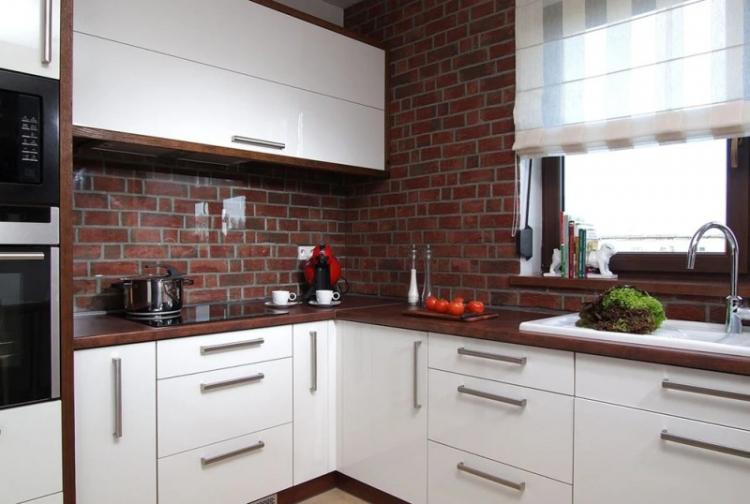
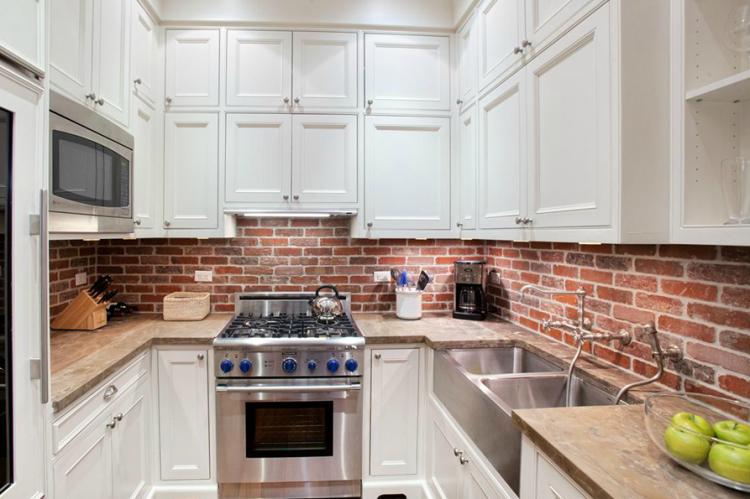
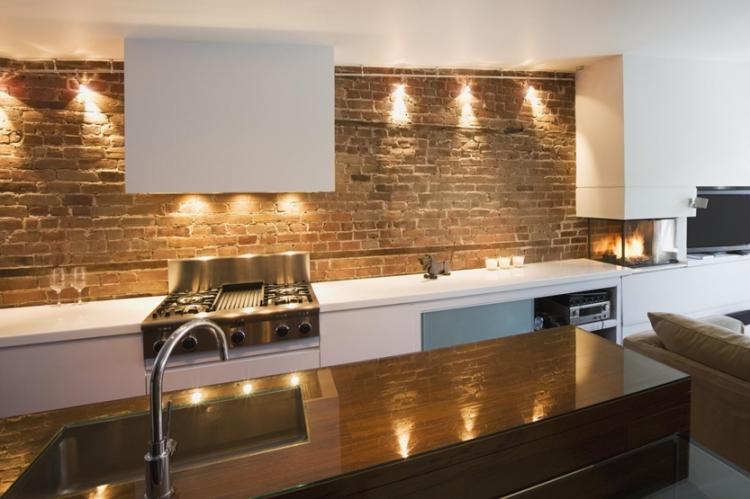
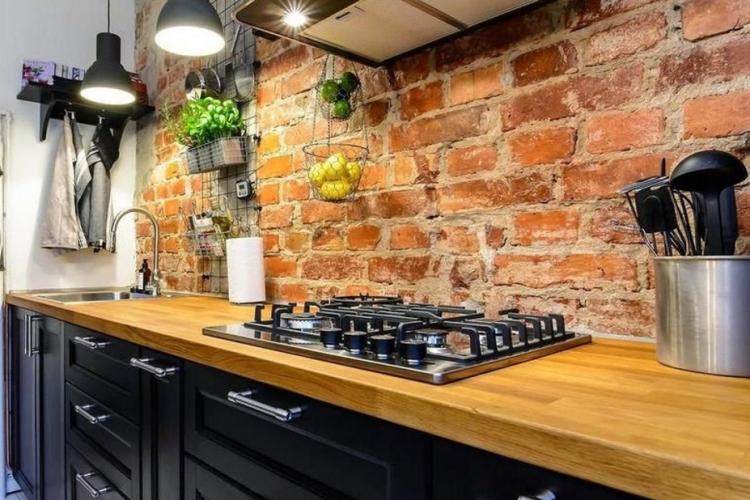
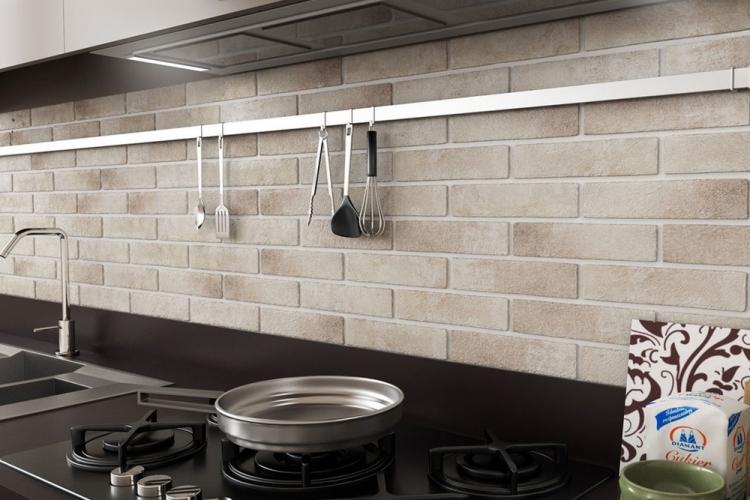
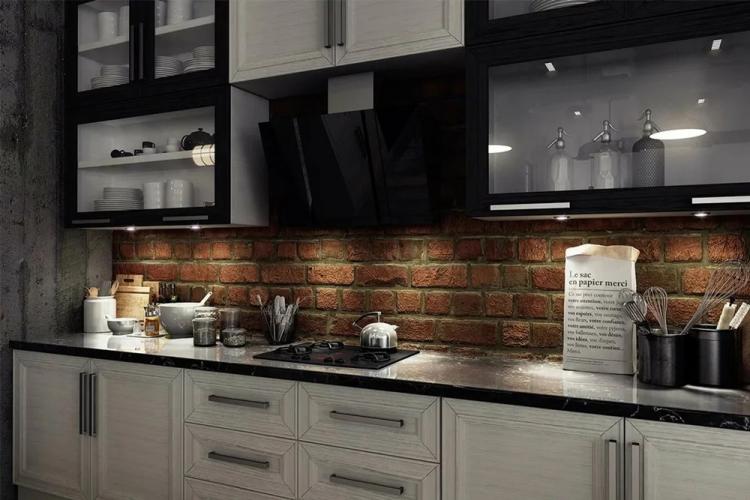
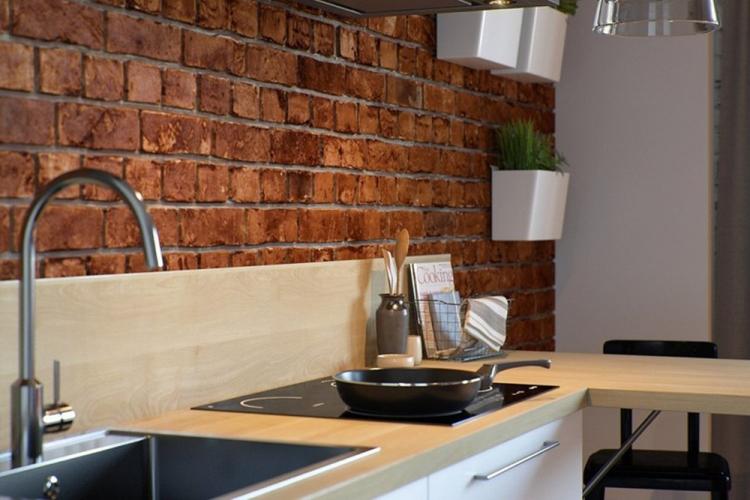
8. Apron in the kitchen made of plastic
To create a plastic apron, special heat and moisture resistant panels are used, which are mounted directly into the profiles. They are installed even on an uneven wall, like a regular outer cladding, and you can cope with this yourself. The surface can be easily washed and painted, and it looks pretty neat.
But plastic cannot be used with a gas stove, and its service life is a maximum of several years. It fades, turns yellow, fades and scratches, but it is very cheap. Usually such aprons are made in summer cottages or in temporarily rented houses.
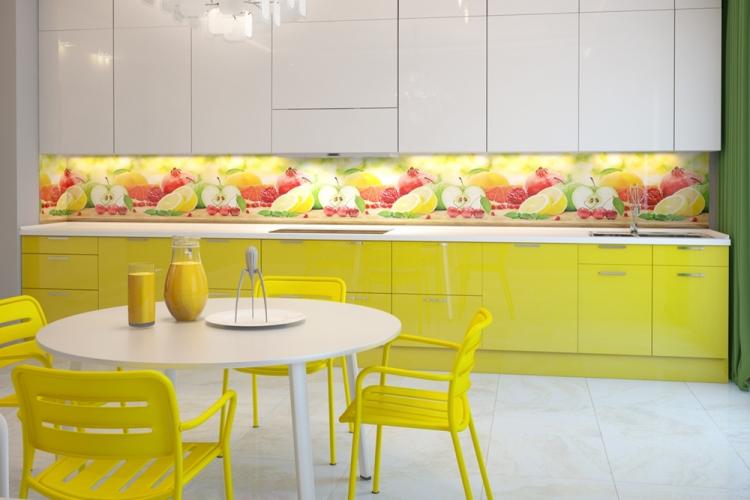
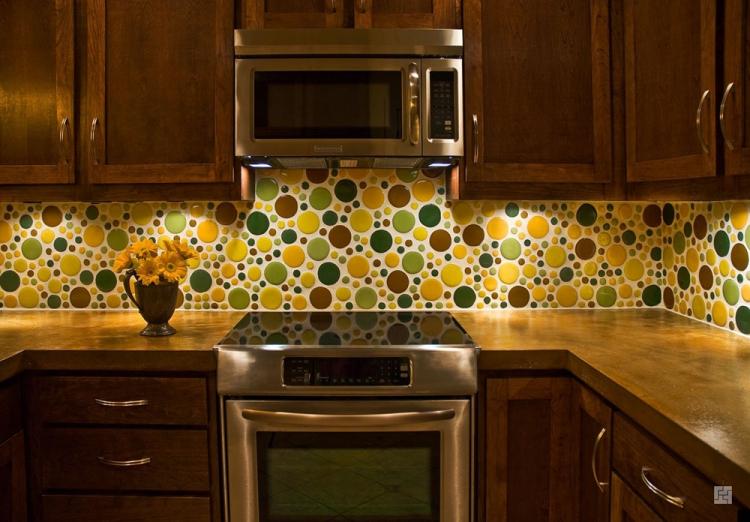

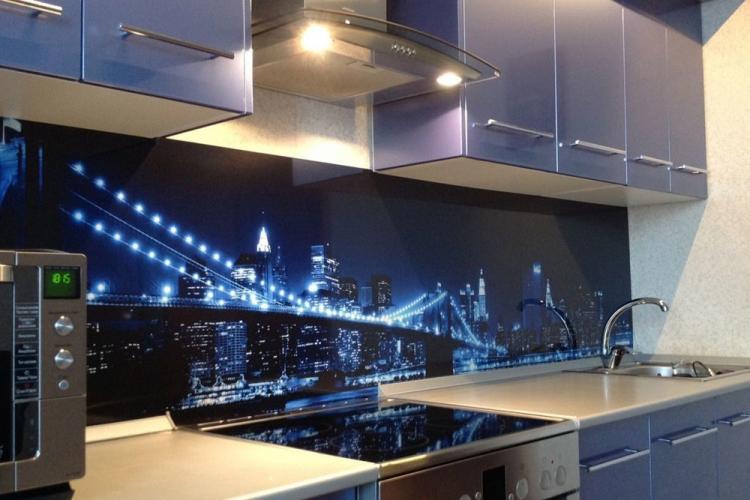
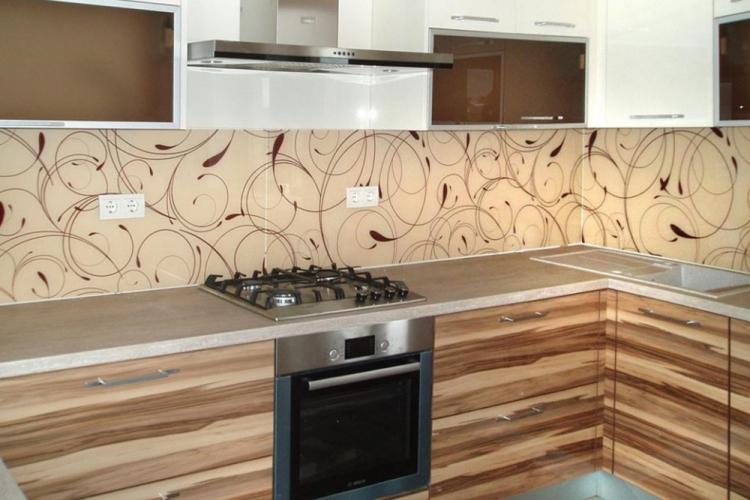
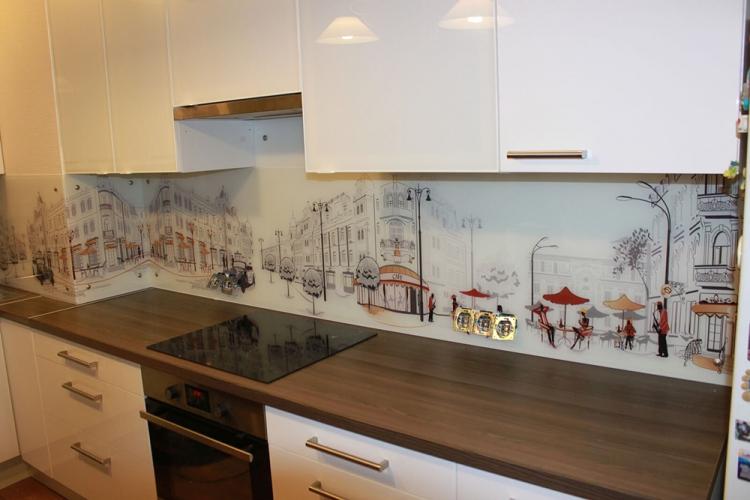
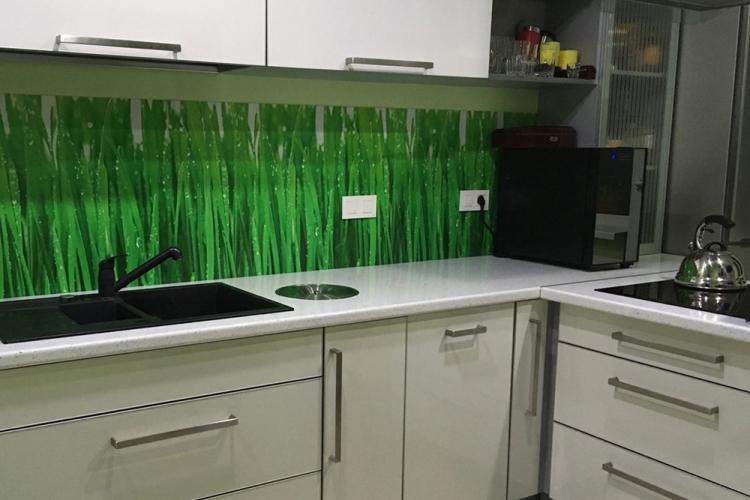
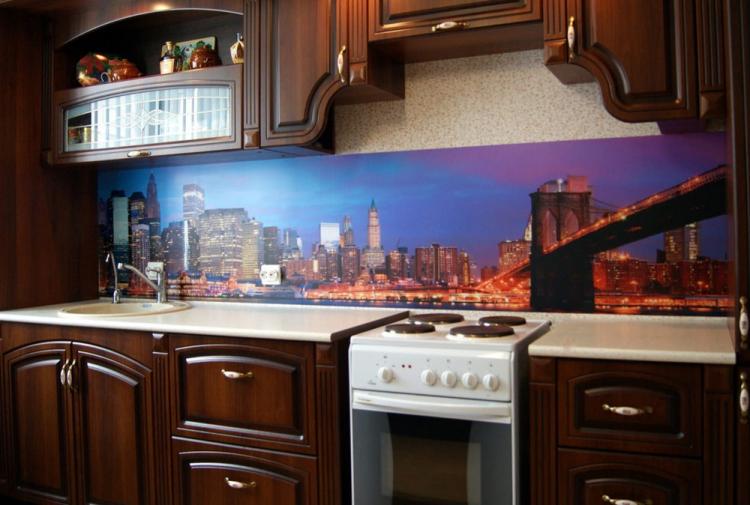

9. Apron in the kitchen with slate paint
Slate paint is an interesting decorative solution for creative people. On a makeshift board, you can leave messages and notes, draw or save your favorite recipes. Initially, slate paint was used to restore old school blackboards, but then its advantages were appreciated by designers.
The composition is based on latex without harmful and toxic solvents, but with small metal particles in the composition. This also gives the board a magnetic effect to attach nice little things and accessories to it.And for a matte coating, gypsum, marble chips, dolomite and other modifiers are introduced.
Slate paint easily fits on almost any substrate: wood, chipboard, fiberboard, wallpaper, drywall, ceramics, glass or even metal. It is better to apply it in several layers, especially if magnetic properties are needed. But the slate surface must be constantly carefully looked after and it will not fit into every interior.
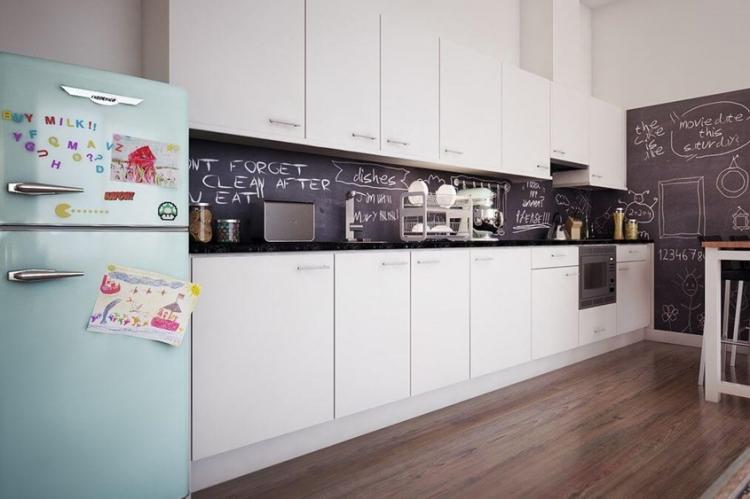

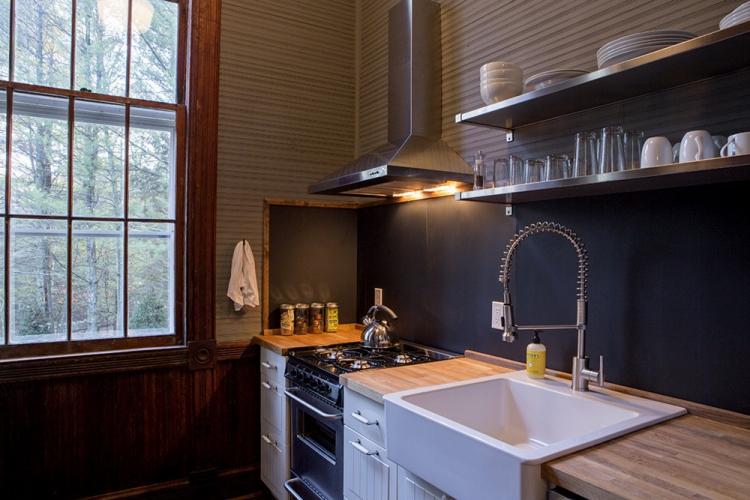
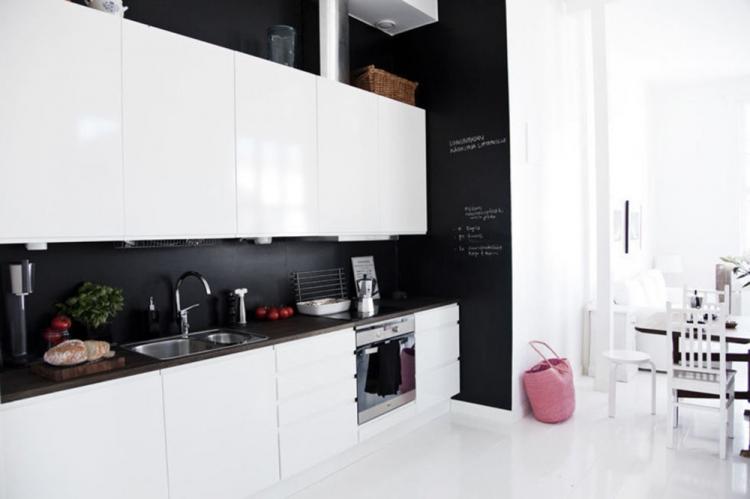
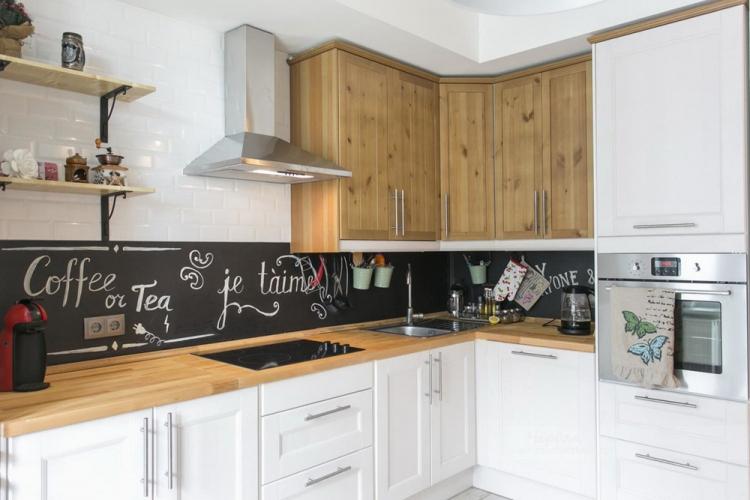
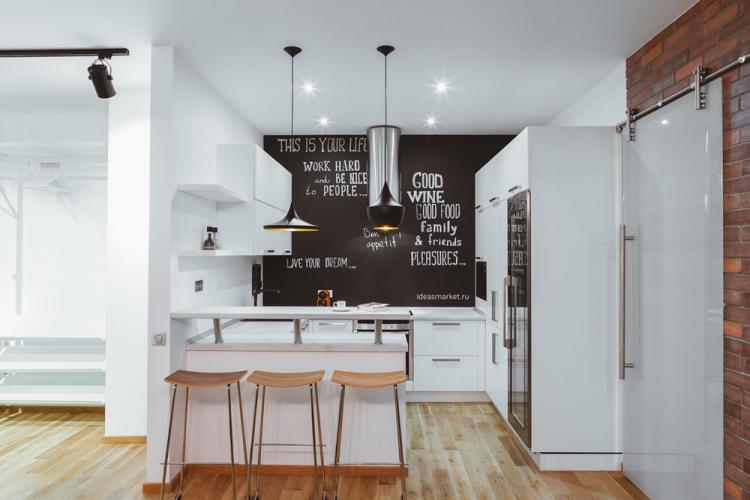
10. Apron in the kitchen made of metal
An interesting and stylish solution for modern technological interiors is a stainless steel apron. The popularity of such a finish was appreciated primarily in a professional kitchen, but in everyday life it is no worse.
The steel is durable, wear-resistant and extremely unpretentious to maintain. It can be stretched over the entire work area or used as a screen behind a stove or sink in combination with other materials.
The downside is that the polished finish is easily scratched, splashed, smudged, water droplets and fingerprints. The matte finish solves this problem in part, but it does not fit into every finish. Keep in mind that a metal apron is not suitable for classic interiors, Provence and decorative styles.
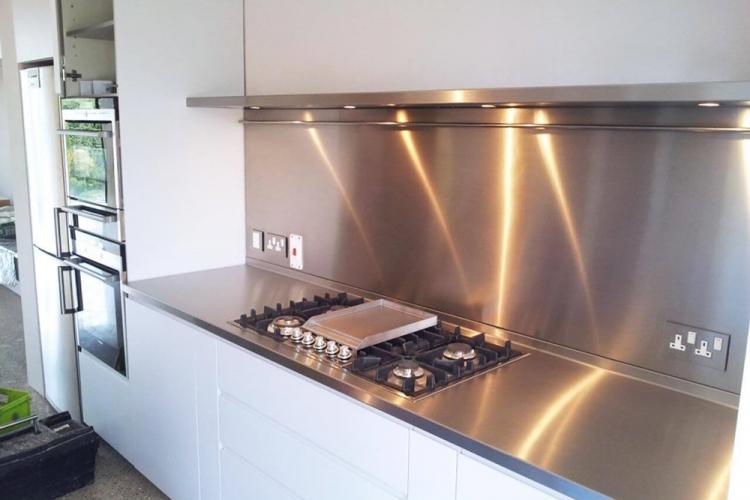

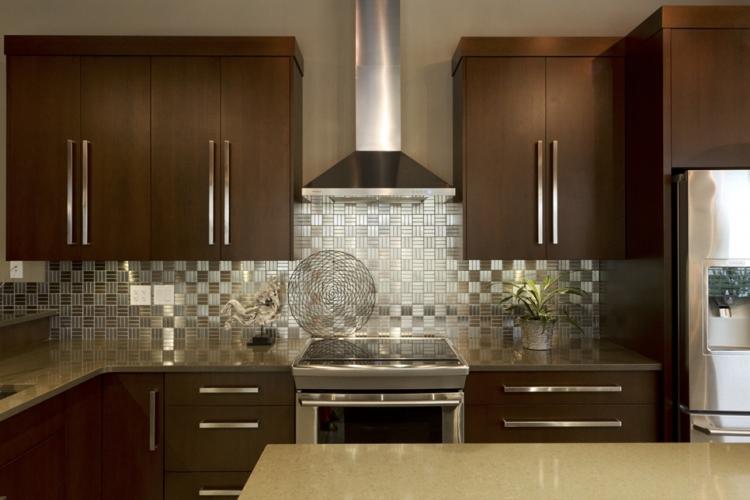
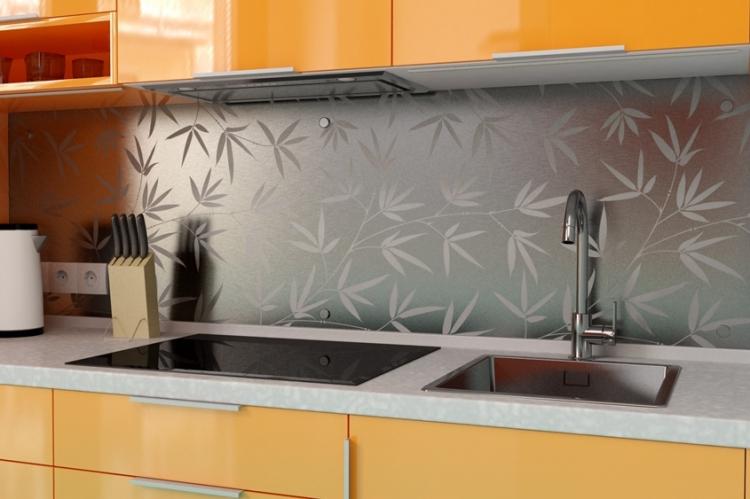

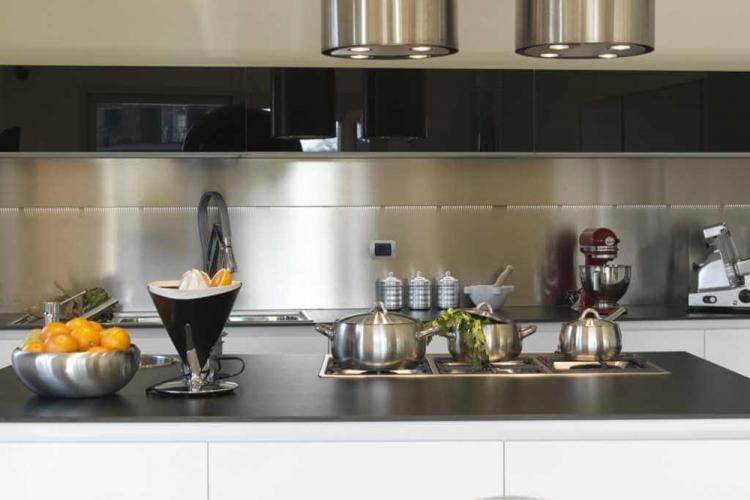
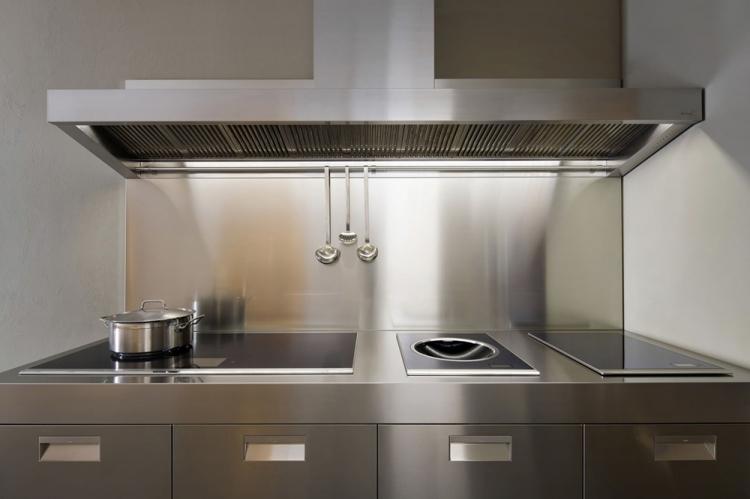
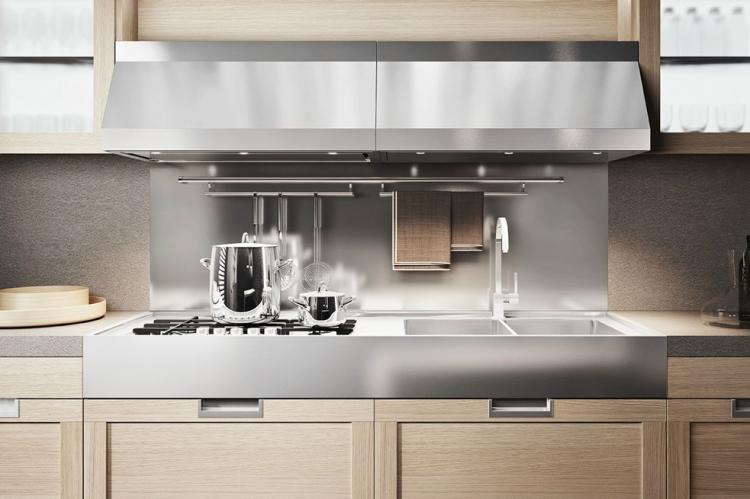
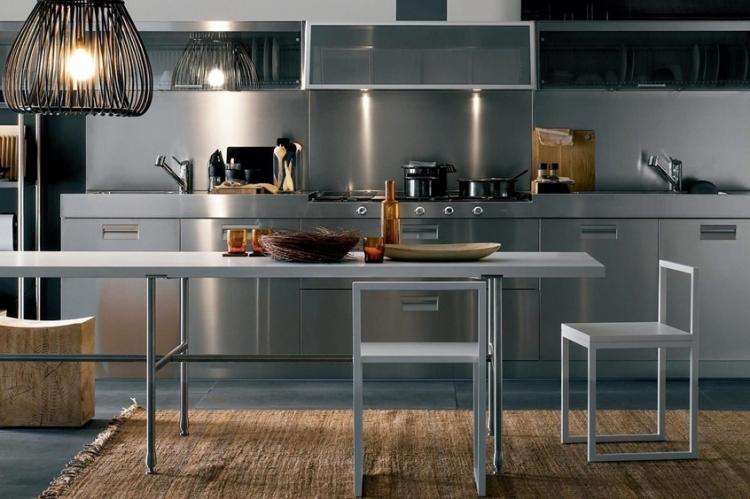
11. Apron in the kitchen mosaic
An apron in the form of a mosaic is a stylish and creative interior solution that immediately gives the kitchen individuality. It can be created from any material: small tiles, stone, metal plates, smalt, glass, or a combination of these.
If you want to show your imagination and not be limited, lay out the ornament yourself. And if you prefer ready-made, harmonious and stylish solutions, ready-made sets are sold immediately superimposed on the grid. The variegated surface of small particles hides minor defects in the base, so laying mosaics is sometimes easier than conventional ceramic tiles.
The disadvantage of this solution is the high cost of the mosaic itself and its installation, especially for complex patterns. The second problem is that the more fragments, the more seams. If you need a more budgetary and simple material, pay attention to mosaic tiles.
